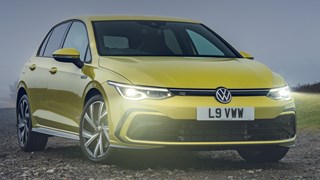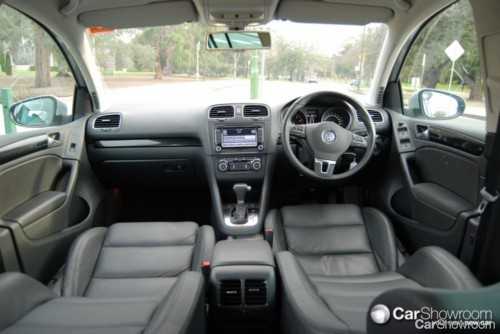Volkswagen’s Icon Re-emerges from Germany
With the launch of the all-new sixth generation Golf, Volkswagen Australia got with the strength.
Sourcing of Golfs for the local market swapped from the Volkswagen plant in South Africa to headquarters in Wolfsburg, Germany where the massive assembly plant boasts a floor area under the roof that is greater in size than the entire Principality of Monaco!
Consumers needn’t be concerned, there was nothing wrong with the South African Golfs, it’s just Volkswagen re-arranging its global production.
Back in the 1970s Volkswagen manufactured Golfs in Australia when it owned a plant in Clayton, Victoria and the model has won plenty of hearts locally. In fact the 100,000th Golf sold in Australia was recently delivered to a customer in South Australia.
What You Get
Volkswagen says this is the most economical, safe and refined Golf yet, so our curiosity was high when Car Showroom collected two examples for evaluation – the entry level 90TSI Trendline and the 118TSI Comfortline. The nomenclature indicates the 90TSI is powered by a turbocharged 1.4-litre petrol engine (delivering 90kW of power) while the 118 is powered by a 1.4-litre petrol engine, that is both turbocharged and supercharged, with 118kW.
Golf’s diesel derivative is the 2.0-litre 103 TDI Comfortline which – you guessed it – delivers 103kW. Comfortline is the more luxurious specification grade – diesel power is not available in the lower grade Trendline.
Sporty GTI and R32 versions are currently still being sold as fifth generation models until the later launch of sixth generation versions.
After a week in each of the two Golfs we can see why it was named the 2009 World Car of the Year by a jury of 59 international motoring writers.
Both are comprehensively equipped, but amongst the extra features included in the Comfortline specifications are 16-inch alloy wheels (15-inch steel wheels on the Trendline); improved seats and upgraded interior trim including a leather-wrapped steering wheel, gear lever and handbrake. The Trendline we tested was also fitted with the optional sports seats (finished in beautiful Vienna leather), satellite navigation and rear view camera.
Under The Hood
The 90TSI Trendline is powered by a new turbocharged direct injection1.4-litre engine that delivers 90kW of power at 5,000rpm and peak torque of 200Nm between 1,500rpm and 4,00rpm. Volkswagen mounted the water-cooled intercooler directly in the induction pipe and this is part of low-temperature coolant loop that is independent of the engine coolant system: lower air temperature for the intercooler air produces faster throttle response.
In manual form this high-tech powerplant consumes just 6.2l/100kms of fuel and emits 150g/km of CO2.
Acceleration from the 1.4-litre is still impressive – zero to 100km/h takes 9.5 seconds. To compare: Toyota’s naturally aspirated 1.8-litre Corolla takes 9.7 seconds for the standing 100km/h and fuel consumption is 7.4l/100kms.
The 118TSI Comfortline is the most powerful of the current sixth generation Golfs with 118kW at 5,800 rpm and peak torque of 240Nm from only 1,750rpm. Fuel economy is 6.2l/100kms, CO2 emissions 144g/km and zero to 100km/h is achieved in 8.0 seconds.
A Roots Principle supercharger is used to give the 118TSI rapid response from low speeds while the exhaust gas driven turbocharger kicks in at 3,500rpm.
The Interior
A huge improvement over the fifth generation model, Golf’s latest interior is one of the very best – everything just fits, works and oozes quality design and manufacturing.
Volkswagen praises its RAMSIS 3D computer-human model which simulates all different sizes of people and their hand/head/leg movements…but we reckon there are some very clever people working there in Wolfsburg, Germany.
The traditional two round instrument clusters are reminiscent of the Passat CC with nice chrome bezels even in Trendline models. Scale markings are backlit in white (a departure from Volkswagen’s traditional blue).
On the center console are adjustments for audio and climate control – also nicely trimmed in chrome. Scandinavian audio specialist Dynaudio developed two sound systems and one sound/navigation system for the new Golf – all MP3 and USB compatible.
The drivers’ seat is height adjustable through 61.5 mm and combines with height and reach adjustment for the steering wheel to provide a nice driving position.
In the rear, seating is comfortable and legroom - typical for this segment - is OK (but not for basketball players traveling long distances).
The rear seat divides 1/3 or 2/3. With all seats in place, the cargo area provides 350 litres or 1,305 litres with the seat fully folded.
Exterior & Styling
Italian Walter de Silva took the reigns of Volkswagen’s design studios in February 2007 and while skeptics said the new Golf was indistinguishable from its predecessor – that is simply wrong.
In some ways it’s a case of something old/something new. Clearly a Golf, the six generation lineup exhibits proportioned flares and recesses that give a much more three-dimensional look than previous models but the front grille has assumed proportions reminiscent of the original Golf, launched in 1974 (horizontally aligned between the headlights).
There is a prominently contoured shoulder line from front to back that is accentuated from the rear by the large tail-lights.
On The Road
‘Refinement’ is the key word to the new Golf’s driving dynamics. Volkswagen’s extensive sound reduction efforts (including exterior mirrors like the Passat CC and a film on the windscreen) have paid dividends - one Car Showroom driver thought the 90TSI Trendline had engine cut-off when stopped in traffic it was so quiet.
The 118TSI Comfortline we tested drove via Volkswagen’s seven speed DSG (Direct Shift Gearbox) while the base model 90 TSI had the five-speed manual transmission.
Both were superb on road. We’re fans of the German brand’s DSG - we like the way it snaps through the gears in milliseconds under acceleration and instantly finds the correct gear when pushing along through our high speed mountain test route.
We were intrigued by the whirring noise that came from the rear of the Comfortline when we selected reverse gear. That would be the large Volkswagen logo on the rear hatchlid folding up and the reversing camera sliding out…straight out of The Thunderbirds.
Ride and handling are significantly better than the previous Golf – very sharp, nicely balanced and enjoyable (although the 205/55 R16 rubber on the Comfortline was distinctly better than the 195/65 R15 rubber on the Trendline).
Challenges
Golf’s starting price of $25,990 for the 90 TSI Trendline we tested is quite sharp but we reckon the value-for-money proposition does weaken after that. The extra kit included in the Comfortline specification seems a but shy for an extra $4K and by the time you spec it up to the car we tested (leather seats, satellite navigation etc) you’re a fair way north of $30K.
You’ll need +$35K to consider the range-topping 105TDI.
Verdict
This is a quintessential Golf. While it is a car designed for mass appeal it is also technologically brilliant, classy and refined. Could that be a result of the Porsche influence being felt at Germany’s number one car-maker these days?
It’s a deserving winner of the 2009 World Car of the Year title.
The Competition
In Europe they talk about the ‘Golf Segment’ and it’s almost a similar story here. Audi’s A3 and BMW 1 Series hatch are comparable but a lot more expensive.
Ford’s Focus also has German origins and is a great drive. Its TDCi hatch is similarly priced but ultimately it can’t quite match the Golf for refinement.
Holden’s Astra has European pedigree but also falls short of the Golf for dynamics and refinement.
Thumbs-up:
Technically brilliant; substantial quality; nice drive
Thumbs-down:
Model differentiation/value proposition gets confusing






















